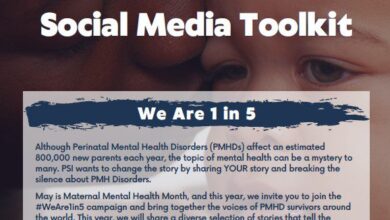How to Get the Most Out of Your Postpartum Checkup

Shortly after giving birth, it’s common to have a “postpartum checkup,” where your medical provider can see how you’re healing and give the necessary clearance to resume exercise and physical activity. A postpartum checkup usually occurs about 6 weeks after a vaginal birth and 8 weeks after a Cesarean birth. Despite having just gone through such a major physical and life change, this diagnosis is usually quite quick. While there are certainly exceptions, most medical providers do a very brief 5- to 10-minute exam to make sure the bleeding has stopped and any tears or stitches have healed, then “clear” you for the exercise.
Many postpartum people say they leave their appointments without even checking for common underlying issues diastasis recti o dysfunction of the pelvic floor, or given specific guidance on where or how to begin returning to exercise. We want to make sure you feel well-informed heading into your first check-up so you can make the most of this time with your medical provider. So, that will be the focus of this article.
1. Ask for an Earlier Visit with your Provider
Although 6 weeks is the norm, there is no hard rule that you will not be seen sooner if your provider agrees to it. In fact, many providers see their postpartum patients at 2-3 weeks AND later at 6-8 weeks. It can be helpful to get tested earlier to address any issues that may have resulted from childbirth and get clearance to start some physical activity (if you want). Many providers will accommodate this request, so be sure to check soon after the birth for your provider’s availability.
2. Check-In Before Your Checkup
Your postpartum visit is a helpful way to get an outside look at how your body is recovering from childbirth. However, it is useful if you take inventory of your body, as a form of a “check-in” to remember how you feel first.
The first, and most obvious, answer may have been exhausted. But deeper.
- Do you have trouble sleeping when you actually have time to relax?
- Do you notice any pain in your ______ (back, neck, hips, pelvic region) during certain movements?
- Has the bleeding stopped?
- Do you experience any involuntary leakage (incontinence) or feeling of pressure in the groin during certain activities?
- If you had a Cesarean delivery, did you have any pain (redness or swelling) at or near the incision site?
- Do you have any concerns about your psychological health (sudden crying, apathy towards the baby, lack of interest in nursing, etc.)?
Note your answers, which you can also write down to bring to your appointment (because “mother brain” is real). That way, you will be an informed participant in your postpartum healing journey.
3. Ask Your Provider Three Important Questions
Often, providers will ask how you’re doing, and this is the time to tell them (and not explain your concerns). Note any remarkable findings from your self-assessment before your appointment. In addition to raising any specific issues, you can ask a few more questions:
- do i have Diastasis recti?
- Note: Your medical provider may not know how to (accurately) diagnose DR. See this post for guidance on how to check DR. You can also do a self-assessment at any time.
- Does my pelvic floor seem to have healed? This includes any stitches you may need from the delivery. Learn more about the signs of dysfunction of the pelvic floor and ask your provider for a referral to a pelvic floor physical therapist if you experience any symptoms.
- Note: even if you don’t think you have any dysfunction, seeing a pelvic floor physical therapist is incredibly helpful if you have access to one.
- What recommendations do you have for getting back into exercise?
- Remember: If your provider doesn’t provide much guidance on this, it’s important to start with recovery work. You can find some tips here at postpartum core recovery.
4. Be Your Own Advocate
When you’re newly postpartum, it can feel like you’re a stranger in your own body. And to be fair, that’s true to some degree. Your body goes through so many changes over the course of nine months that it’s bound to feel strange. However, it is important to spend time getting to know the new YOU to determine if something is unfamiliar there is a problem. It’s a subtle understanding but one that can determine if you need extra care.
If something doesn’t feel right, take it to your provider. If he tries to minimize your concerns, you may need to find someone who takes them seriously. This is true for physical and psychological issues, which may not be immediately obvious after childbirth.
More than Check-Up
Postpartum care is not a “one and done” experience. You are on a healing journey and that process is not always linear. Therefore, try to stay as embodied as possible while navigating life as a babysitter. It’s easy to suppress or ignore your own needs in the early weeks and months postpartum but neglected issues can manifest in discomfort or pain, which can interfere with your ability to be an effective caregiver.
Want More Resources?
For additional resources to help you recover, build strength, and get back to doing what you love, explore our Postpartum Training Programs. Or, for a more personalized approach, visit our Find a Coach page to find an expert trainer who can design and coach you through a customized training program.
Finally, if you had a Cesarean birth, you can find it C-Section Guide helpful It gives you a number of techniques to support healing — from scar massage, to recovery exercises, to range of motion and much more.
Are you a Health & Fitness Professional?
If you are a health and fitness professional interested in coaching pre and postnatal clients, explore our ProNatal Education & Certification.





